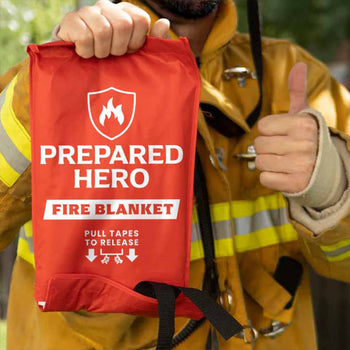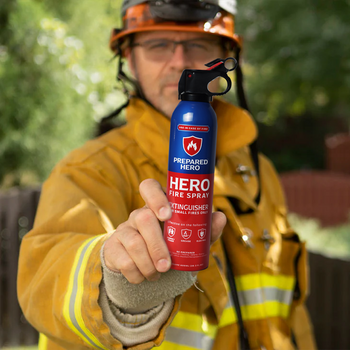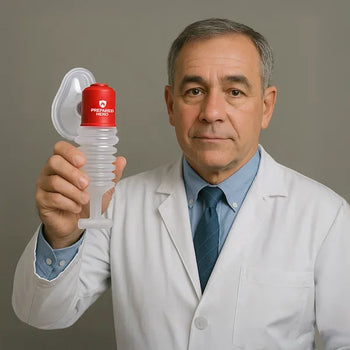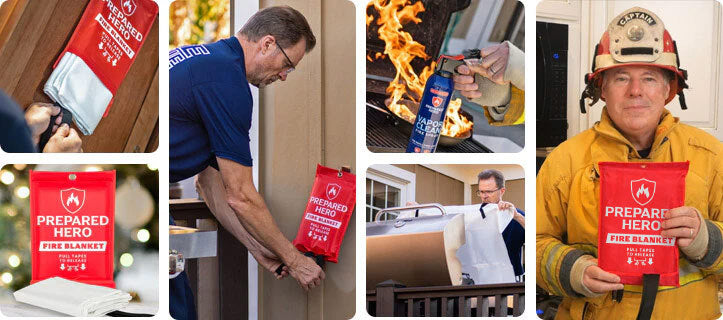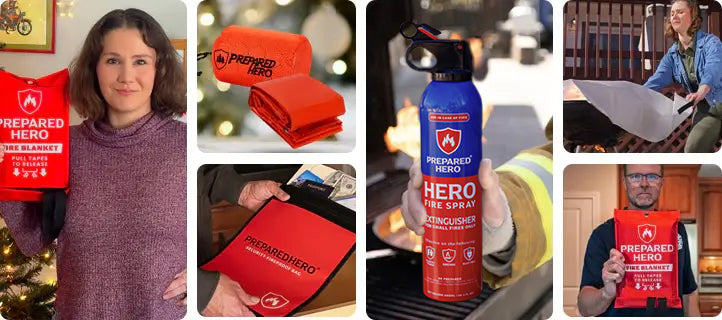Where you put your smoke detectors matters just as much as installing them. Proper placement makes sure they can detect...
Did you know? Fire sprinkler systems helped control 97% of home fires, according to the National Fire Protection Association.
Hence, installing a fire sprinkler system keeps your family safe from home fires. It immediately activates after a kitchen fire occurs and makes fire damage cleanup easier.
But how exactly does a fire sprinkler system work? This post outlines the basics of a fire sprinkler system.
The Basics of a Fire Sprinkler System
How does a fire sprinkler system work for your home? Here are the basics of a fire sprinkler system:
1.The Water Source

First of all, you need to understand where the water comes from. According to Science Direct, a sprinkler system begins with the water supply and ends at the sprinkler head.
The water source can be a water tank, a municipal water system, or a lake. The local government usually determines what type of water supply your house or building needs.
For instance, a fire sprinkler system for a cabin near the lake can use the water from the lake. On the other hand, an apartment building in a city center can use the city’s water system.
2.The Pipes

The next essential component of a sprinkler system is the piping from the water supply to the riser.
Installers put the pipes underground. However, they might put them above the ground at times. Either way, the piping should be restrained. It’s because a sudden force of water can rip it apart.
Installers usually reinforce bends using a mechanical joint restraint, concrete thrust blocks, tie rods, or a combination of the three.
If the piping’s done underground, experts factor in corrosion. However, sacrificial anode bags can delay the corrosion process. In addition, installers incorporate a backflow system into the piping to prevent contaminating the primary water source.
3.The Sprinkler Riser

The sprinkler riser refers to a vertical pipe. It connects to and brings the water from the piping to the overhead. The riser involves several parts, including a check valve, control valve, test drain, water flow switch, and many pressure gauges.
The control valve turns off the sprinkler system once the fire has been extinguished. On the other hand, the check valve prevents water from returning to the underground system.
The water flow switch signals the fire alarm system when water moves through the system. Meanwhile, the test drain measures the pressure and flow from the system without actually setting off any heads. Lastly, pressure gauges show the working pressure of the sprinkler system.
4.The Sprinkler Head

The head releases water when the system detects fire. Each sprinkler head features a trigger mechanism, which opens to release water.
Home fire sprinkler systems usually have conventional heads. They release water onto the ceiling. On the other hand, pendant or upright sprinklers release water straight down. They work well for places with high ceilings.
Additionally, every sprinkler head activates independently. Only sprinkler systems above the fire will maximize water pressure over the fire to reduce it.
Types of Fire Sprinkler Systems
Fire sprinkler systems, just like fire extinguishers, come in many types. Here are the main types of fire sprinkler systems:
1.Wet Pipe Fire Sprinkler System

Wet pipes are the most common type of fire sprinkler. In this system, water constantly fills the pipes.
The fusible link or glass bulb will break when the temperature gets hot enough. Since the system already has water, water quickly flows out of the sprinkler head.
Contrary to popular belief, not all sprinkler heads will release water simultaneously. Only those that detect heat will release water.
Additionally, wet pipe sprinkler systems are the most cost-effective and reliable. For these reasons, many homes and commercial buildings use them.
However, some places may not need wet systems. If the environment is too cold, the water inside the sprinkler will freeze. So, cold areas shouldn’t use wet pipe fire sprinklers.
2.Dry Pipe Fire Sprinkler System

Dry pipe systems work like wet pipe systems. The only difference is that water doesn’t fill the pipes.
Instead, it stores water behind a dry pipe valve away from the sprinklers. Like a wet pipe system, the dry pipe's glass bulb or fusible link breaks when the temperature increases.
But in this case, water won't immediately come out because the pipes don't have it. Instead, air comes out of the sprinkler head. This decreases the pressure, causing the dry pipe valve to open and water to fill the system.
Then, water comes out of the sprinkler head. Since water won't come out immediately, dry pipe fire sprinklers should have a specific size, which shortens the time for water to come out.
You'll find dry pipe sprinkler systems in cold places where the water inside pipes might freeze.
3.Pre-Action Fire Sprinkler System

Something should happen first for a pre-action fire sprinkler system to work. The trigger depends on the system: non-interlock, single interlock, or double interlock.
A non-interlock system involves detection devices or automatic sprinklers. The system will only work if detection devices or automatic sprinklers activate.
Meanwhile, a single interlock system relies on detection devices. It means they won't work if the devices don't detect heat or smoke.
On the other hand, a double interlock system involves both detection devices and automatic sprinklers. It means they'll only work if detection devices and automatic sprinklers activate.
Like dry pipe systems, pre-action pipes don't hold water. Instead, they contain compressed nitrogen or regular air.
4.Deluge Fire Sprinkler System

A deluge fire sprinkler system features open sprinkler heads and unpressurized dry piping. The system directly connects to a water supply. Additionally, a deluge valve releases the water to all open sprinkler heads when activated by heat or smoke.
Like a pre-action fire sprinkler system, deluge pipes don't hold water. The deluge valve will keep water from filling the system until it detects smoke or heat.
Once the detection system gets activated, water fills the pipes and flows to the open sprinkler heads. While deluge fire sprinkler systems don't suit homes, they work best in high-hazard places such as aircraft hangers.
How Much Does a Fire Sprinkler System Cost?

Residential fire sprinklers usually cost $1 per square foot. Commercial fire sprinkler systems can go up to $2 per square foot. Hence, sprinklers for a three-bedroom house cost about $2,000.
Plus, fire sprinkler systems don’t require a lot of maintenance. They only need to be inspected twice a year.
Sprinklers don't just save lives; they also save you money in the long run. Fire sprinkler systems control or put out 97% of fires.
They’re great investments that will last for many years. Sprinklers also keep your family safe and at ease.
Frequently Asked Questions
What are the 4 required components of a sprinkler system?
The 4 required components of a sprinkler system are the water source, pipe, riser, and sprinkler head.
How does a fire sprinkler system work?
A fire sprinkler works by detecting heat or smoke. When triggered, the glass bulb or fusible link will break. Water will then come out of the sprinkler heads, reducing the fire.
What are 4 types of sprinkler systems?
The 4 types of fire sprinkler systems are wet, dry, pre-action, and deluge. Wet sprinkler systems contain water in the pipes, while dry systems store water at a location away from the pipes. On the other hand, pre-action sprinkler systems need to be triggered by specific actions. In contrast, deluge systems release water from all sprinkler heads.
What are 3 design considerations for an automatic fire sprinkler system?
The 3 design considerations for an automatic fire sprinkler system are:
- The water supply.
- The kind of fire sprinkler system.
- The fire hazard protection the building needs.
What is the standard pressure for fire sprinkler?
The standard pressure for a fire sprinkler is less than 175 psi (12.1 bar) for those installed aboveground and 150 psi (10.4 bar) underground.
What triggers a fire sprinkler to go off?
Heat or smoke triggers a fire sprinkler to go off. A sprinkler gets activated when the temperature rises to fire-induced levels (usually between 155 to 165 degrees Fahrenheit) or when it detects enough smoke.
What are NFPA 13 sprinklers?
An NFPA 13R sprinkler is a residential sprinkler designed for low-rise homes. The standard produces a sprinkler system that controls home fires and protects against injury and death in buildings with multiple families.
What is the red thing in a fire sprinkler?
Most sprinkler heads have a small bulb with red liquid inside. The bulb prevents water from accidentally coming out of the sprinkler. The heat from a fire expands the liquid. The bulb will burst and release water when the pressure becomes too high.
Conclusion

Knowing the basics of a fire sprinkler system helps you choose the right one for your home. Along with a kitchen fire suppression system, fire sprinklers keep you and your family safe.
But it's always better to be safe than sorry. Although it is impossible to foresee where or when a fire will start, you can take steps to get ready if it does.
Assembling a fire kit with a fire blanket, fire spray, fire protection gloves, and smoke mask helps. Go to Prepared Hero and shop for fire safety tools now!


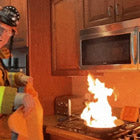 Fire
Fire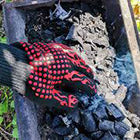 Safety
Safety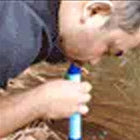 Survival
Survival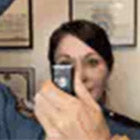 Protection
Protection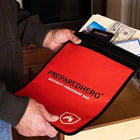 New
New
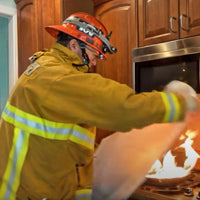 Fire
Fire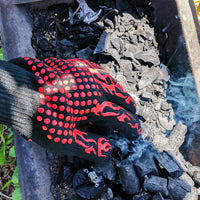 Safety
Safety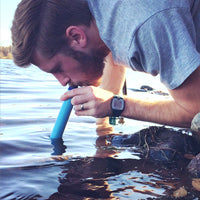 Survival
Survival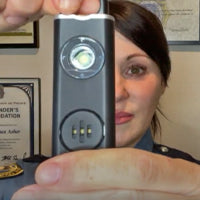 Protection
Protection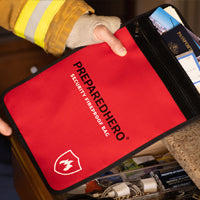 New
New
